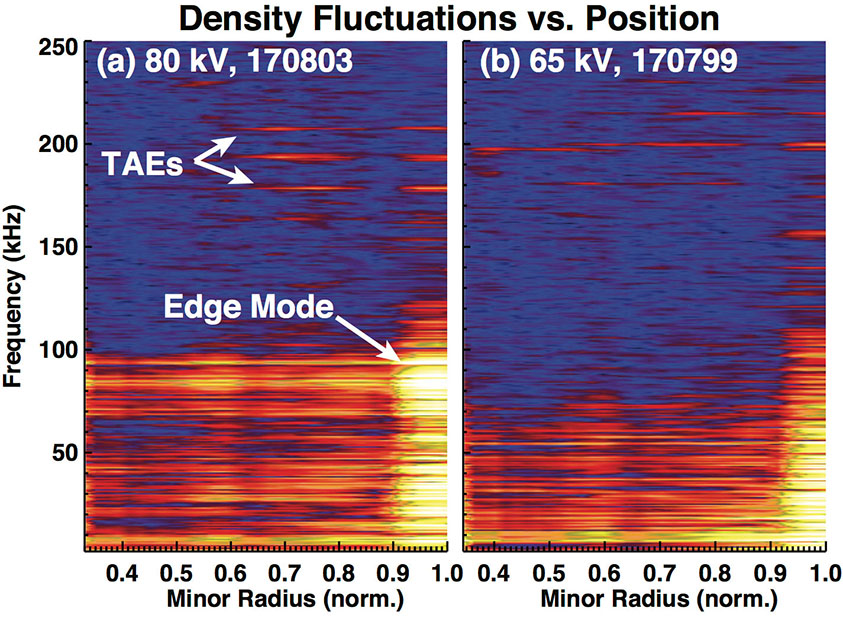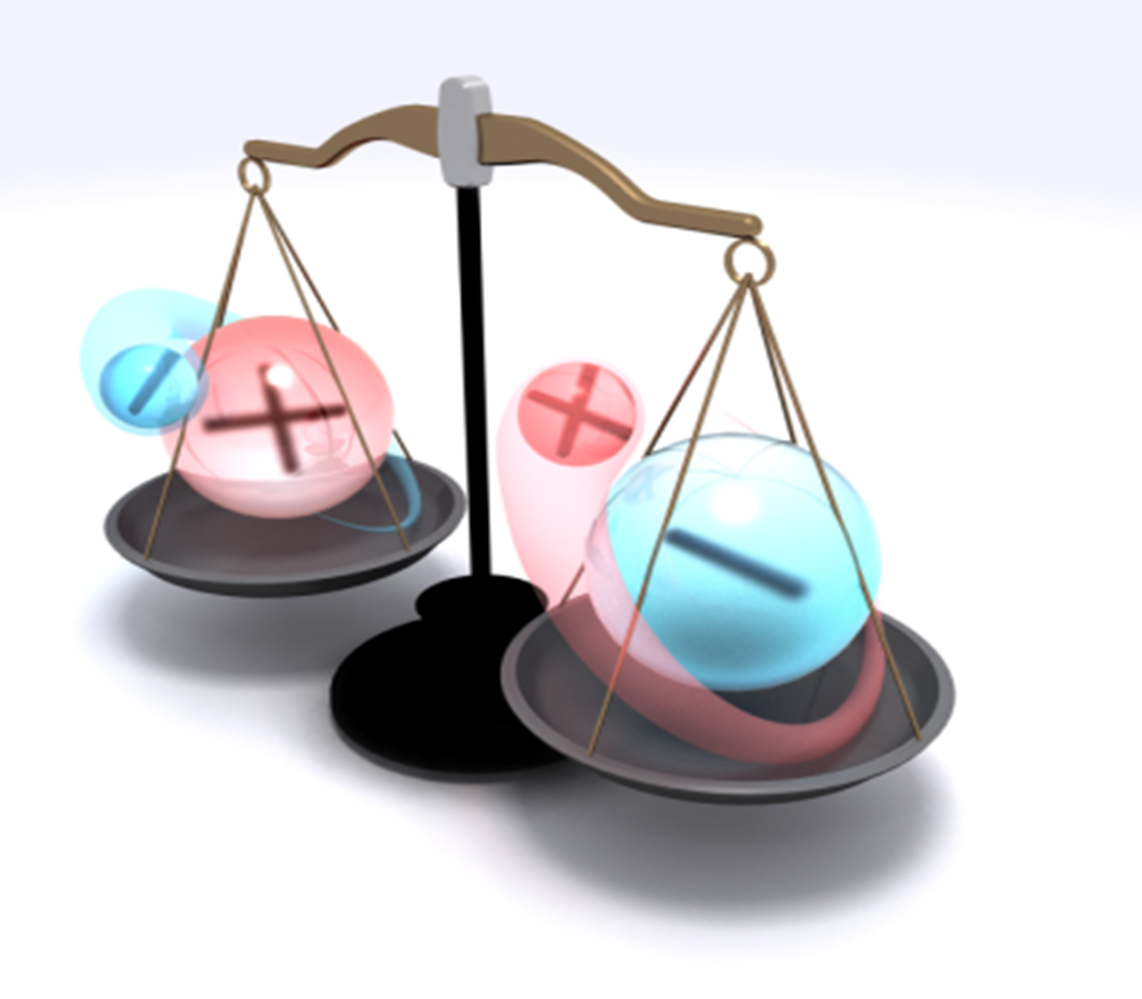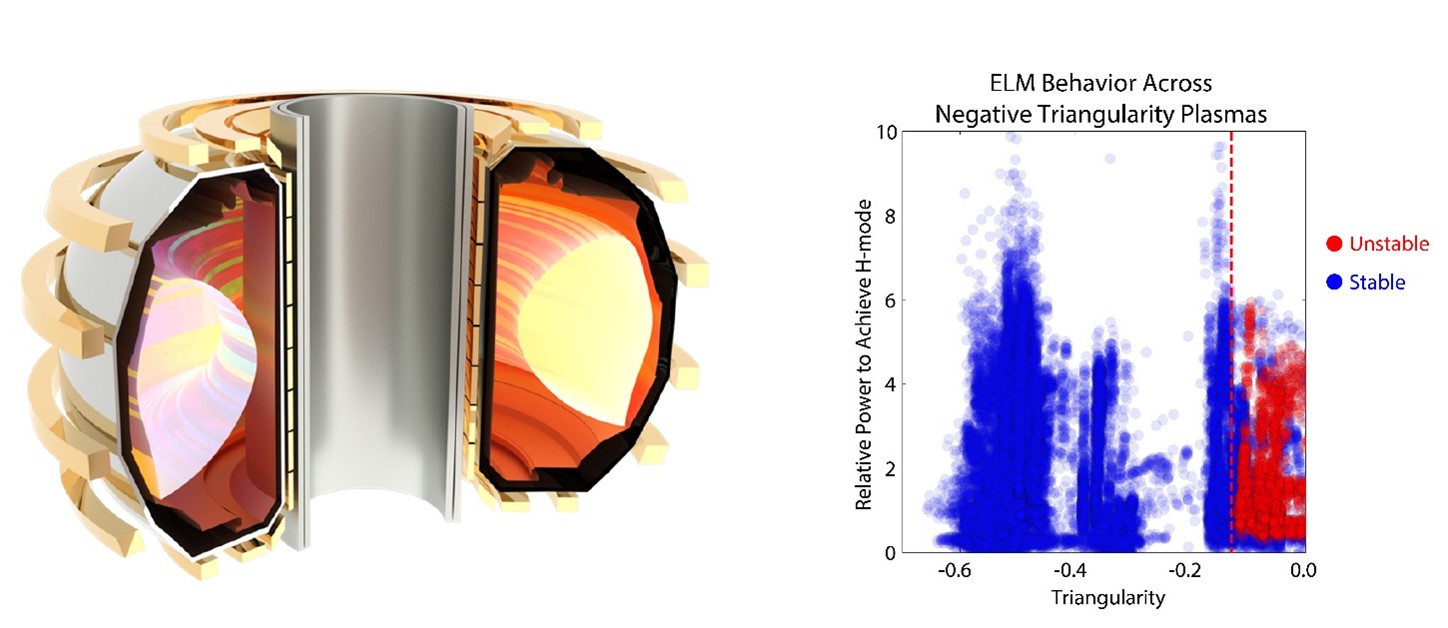Neutral Particle Beams Work Better by Working Smarter
Enabling beams to respond to plasma conditions in real time allows scientists to avoid instabilities and raise performance.

The Science
Neutral particle beams that heat fusion plasmas in the DIII-D National Fusion Facility have been improved by an engineering upgrade that allows them to adjust their energy in real time. DIII-D is a tokamak, a device that uses magnetic fields to contain high temperature plasmas for research and development of fusion energy. Changing the particle energy of the beams as the plasma evolves reduces interactions with electromagnetic plasma waves. The reduced interactions let the injected particles remain within the plasma for a longer time and provide greater heating compared to a fixed (and higher) energy.
The Impact
This technique provides a new tool to control high temperature, magnetically confined, fusion plasmas. Input heating to the plasma can now respond to the presence of plasma waves to ensure that the injected particles remain within the plasma for the longest possible time. The new tool keeps the plasma hotter and better suited to generating fusion.
Summary
In recent experiments, the DIII-D team has shown that reducing the injection energy of neutral particle beams late in a plasma discharge can actually increase plasma heating and current drive. usion experiments previously used neutral particle beams operating at the highest possible energy, and that energy was fixed for the duration of the experiment. The beam voltage sets the energy of the injected particles, and greater energy leads to hotter plasmas. In some conditions, however, these high-energy deuterium particles excite electromagnetic waves in the plasma and those waves can drive the beam particles out of the plasma prematurely, reducing their ability to heat the plasma to fusion conditions. The engineering change allows the beam to produce the same total power level at different values of particle energy. Injecting high power, but low energy, beams into a plasma can greatly reduce the number of electromagnetic waves produced in the plasma, as shown in the figure above.
Contact
David Pace
General Atomics
pacedc@fusion.gat.com
Funding
This work is supported by the Department of Energy (DOE), Office of Science, Office of Fusion Energy Sciences at the DIII-D National Fusion Facility, a DOE Office of Science user facility, operated by General Atomics.
Publications
D.C. Pace, et al., “Dynamic neutral beam current and voltage control to improve beam efficacy in tokamaks.” Physics of Plasmas 25, 056109 (2018). [DOI: 10.1063/1.5016160]
J. Rauch, et al., “Upgrade to DIII-D National Fusion Facility PCS and neutral beam systems: In-shot variation of neutral beam particle energy.” Fusion Science and Technology 72, 500 (2017). [DOI: 10.1080/15361055.2017.1333845]
C.J. Pawley, et al., “Advanced control of neutral beam injected power in DIII-D.” Fusion Engineering and Design 123, 453 (2017). [DOI: 10.1016/j.fusengdes.2017.02.106]
D.C. Pace, et al., “Control of power, torque, and instability drive using in-shot variable neutral beam energy in tokamaks.” Nuclear Fusion 57, 014001 (2017). [DOI: 10.1088/0029-5515/57/1/014001]
Related Links
DIII-D National Fusion Facility: https://fusion.gat.com/global/diii-d/home
Highlight Categories
Program: FES
Performer: University , DOE Laboratory , Industry , SC User Facilities , FES User Facilities , DIII-D



